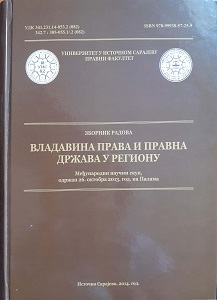Поступак у парницама за објављивање исправке неистините, непотпуне или нетачно пренете информације
The Procedure in Action for Publication of the Correction to the Untrue, Incomplete or Incorrectly Transferred Information
Author(s): Vladimir Boranijašević
Subject(s): Law, Constitution, Jurisprudence, Media studies, Theory of Communication
Published by: Правни факултет Универзитета у Источном Сарајеву
Keywords: Media;Information;Violation of the right or interest:Correction of information;Special civil procedure;
Summary/Abstract: The right to a correction of information which has been either false, incomplete or incorrectly conveyed and which has violated the right or legal interest of the person the information refers to is provided and guaranteed by regulations of international and domestic legal acts. This right is realized in a special kind of civil proceedings and the rules according to which to act have been regulated by the Public Information Act of the Re-public of Serbia. The legislator regulates in detail the rules of conduct in this special civil procedure. As compared to the previous Public Information Act (1998) in which a number of issues were not regulated, the current law almost completely normatively regulates the judicial proceedings for realization of the right to a correction of the published information. The legislator especially emphasizes the emergency of the procedure concretized through regulations of deadlines and elimination of certain institutes characteristic for general civil proceedings, while deviating from the rules of general civil proceedings applied in this procedure. However, although emergency was proclaimed, the legislator can be blamed for the length of terms, if comparison is made to the terms regulated in the procedure in litigation for announcement of the response to false, incomplete and incorrectly conveyed information, where the terms are much shorter.In case we ignore the use of inadequate technical terms and non-existence of certain legal solutions, we can conclude that the legislator has planned for a relatively efficient procedure for protection of the right to a correction of the published information which has violated the right or interest of the person it refers to. With a possible shortening of the regulated terms, the person whose right or interest have been violated would be enabled to realize efficiently the right to a correction of published information.
- Page Range: 536-555
- Page Count: 20
- Publication Year: 2013
- Language: Serbian
- Content File-PDF

